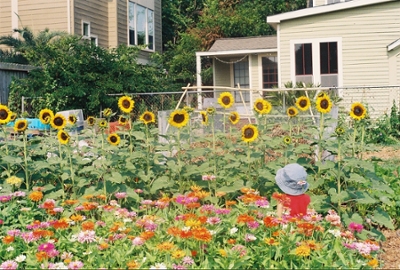 Summer is dishing out lots of very hot days, and we are still mainly gardening in the early morning and very late afternoon to avoid the heat. Fall is close enough to be counting the days until there is a hint of coolness, at least in your garden dreams.
Summer is dishing out lots of very hot days, and we are still mainly gardening in the early morning and very late afternoon to avoid the heat. Fall is close enough to be counting the days until there is a hint of coolness, at least in your garden dreams.
Early mornings are spent removing weeds that have formed both in our ornamental and vegetable beds. For the vegetable gardener, trellises of worn out cucumber vines, spent tomato vines and no longer producing squash vines are being removed and composted. And daily okra, pepper and eggplant harvests fill the rest of the morning. A little work each day will make the summer bearable while preparing your gardens for fall. Adding mulch to already worn down mulch in the vegetable beds is a must in order to conserve water and soil life, in order for the soil to be in great shape for fall planting.
Yes, fall planting is close and requires some planning. Now is the time to decide what you want to grow in the fall. Think about all the vegetables you and your family like to eat. Whatever it is, most if not all can be grown in the fall. Begin to make a list. My list includes lettuce, kale, collards, chard, endive, arugula, beets, carrots, rutabaga, turnips, cauliflower, broccoli, cilantro, dill, parsley, sugar peas, bok choy, cabbage, mustards, onions and garlic.
If you have a large enough garden, all of these vegetables and more can be grown, but not many people have that much space dedicated to vegetable gardening. Therefore, choices need to be made. The smaller the garden, the more careful one has to be with choices. Cut-and-come vegetables will provide the most to eat in the least space. These are the vegetables that can be harvested over and over again all fall, winter and early spring, such as lettuce, kale, collards, mustards, endives and broccoli that produces a lot of side shoots after the main head has been harvested. Vegetables like cauliflower and bulb onions are ‘one-cut’, where they grow for a long time and harvested by one cut, and no more is to be yielded from that space. Avoid these or plant very few if your garden space is limited.
Once a decision has been made on the type of vegetables to grow, some time needs to be dedicated to determining what varieties to grow. There are hundreds of varieties of lettuces, and many varieties of all other vegetables. Some varieties do better in our hot humid mild winter climate than others. The Urban Harvest website, under Gardening Advice, has a list of varieties that have been tested and found to be excellent for our climate. But there are many other varieties that are excellent as well. Check out online seed company catalogs such as Johnny’s Selected Seeds, Baker Creek Heirloom, Territorial Seeds and Gourmet Seeds. In these catalogs you will be find good descriptions that will entice the gardening spirit. Most of these catalogs will tell you how many seeds are in their packets, and they will tell you how many days it will take from planting to harvest. Some carrots, for example, can be harvested at 55 days while others not until 95 days. Unless there is some compelling reason, planting the shortest to harvest will provide more time to plant something else once it is harvested.
Order your seeds now. Seed companies sometimes sell out of highly desired or in-short-supply seeds. Once the seeds arrive, store them in a container with powdered milk at the bottom in the refrigerator. The idea is to keep them dry and cool so they will last for years. The larger the seed, the more years it will last. For instance, bean seeds will last a lot longer than lettuce seeds, for they are many times larger.
All of this planning will pay off handsomely with abundant harvests. If you think you need help with your gardening, you may want to check out the numerous Urban Harvest gardening classes. There is a July 25 Fall Vegetable Gardening class and an Aug. 1 -Constructing the Home Fruit & Vegetable Garden class. See the class listing at Urban Harvest Class Calendar.
This article is provided by Urban Harvest, Inc. To learn about gardening classes, farmers markets, school and community gardens and more go to www.urbanharvest.org or call 713-880-5540 for more information. This article was written by Ray Sher who is a gardening and permaculture instructor, vegetable and fruit garden consultant, and works his large intensive home vegetable, fruit and herb garden using organic methods. Contact him at RayInTheGarden@sbcglobal.net